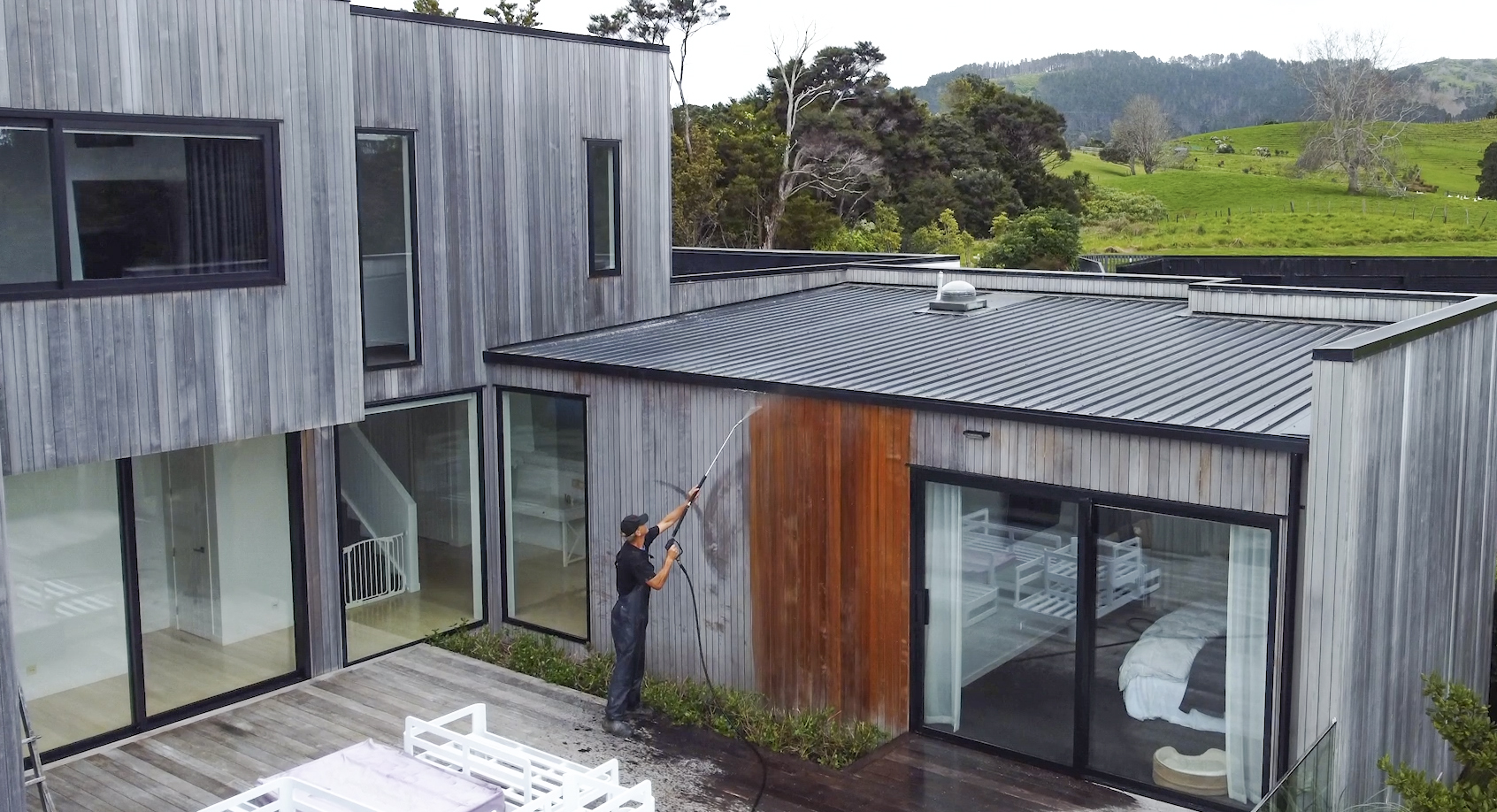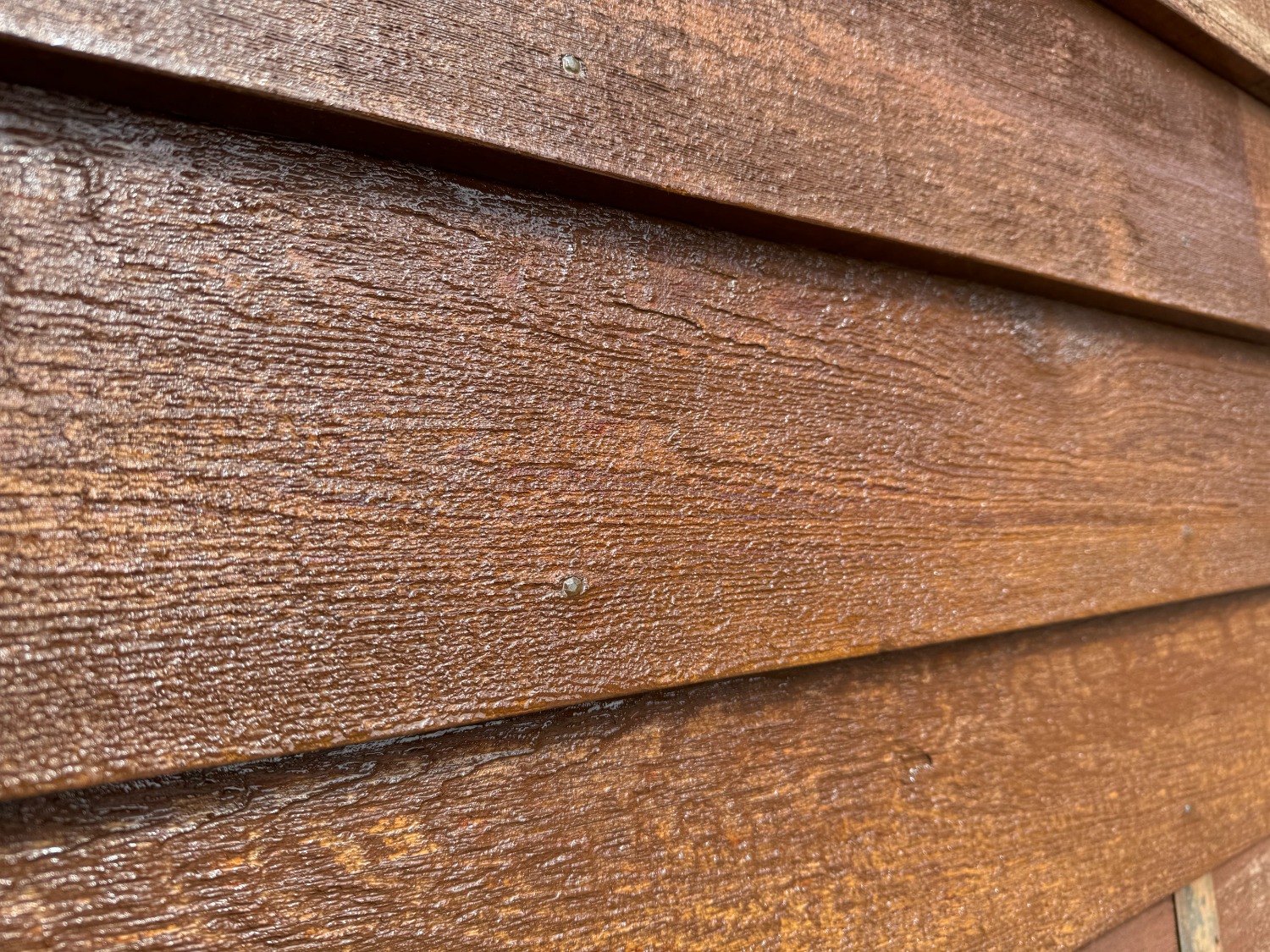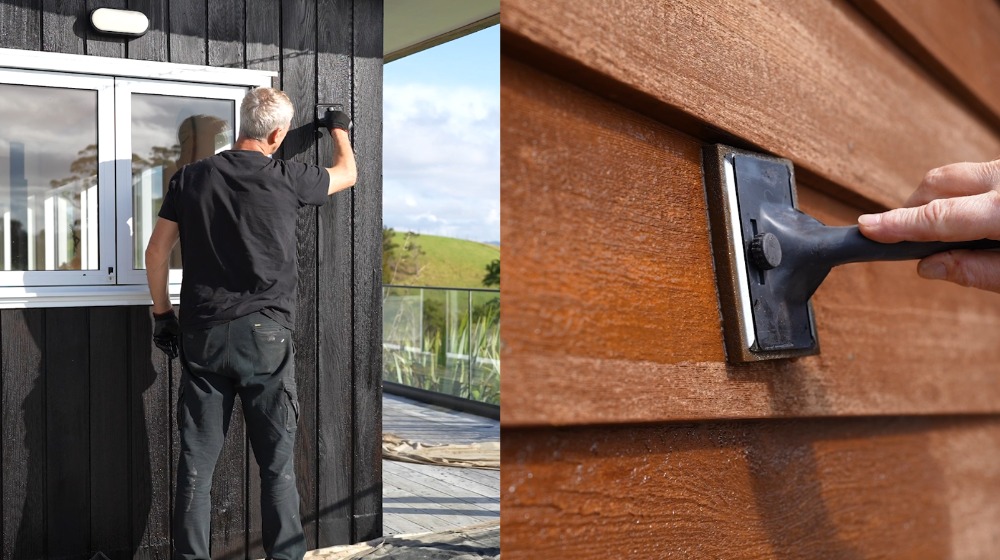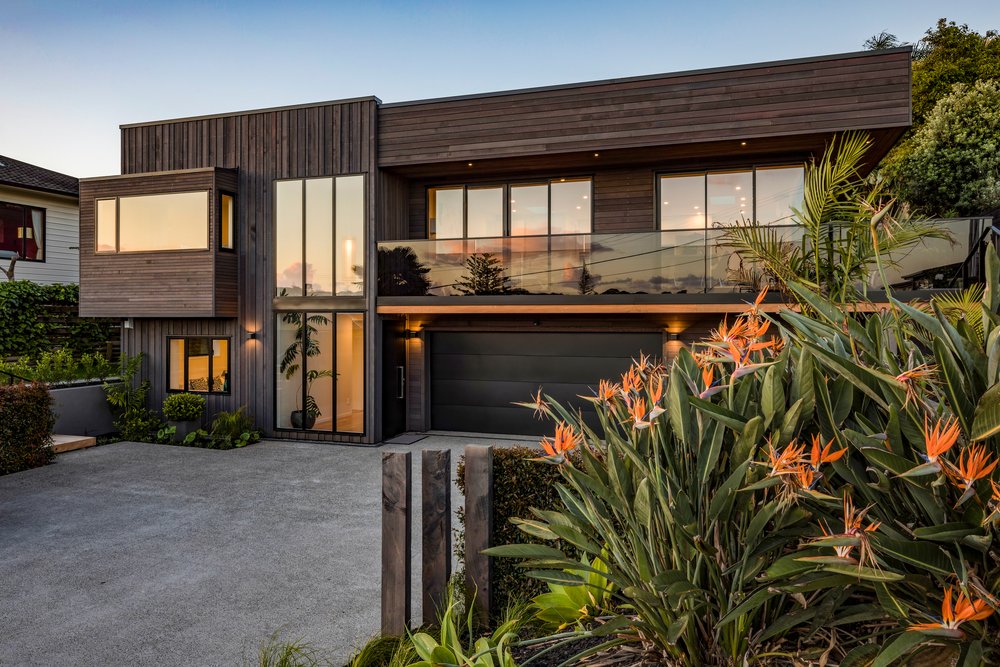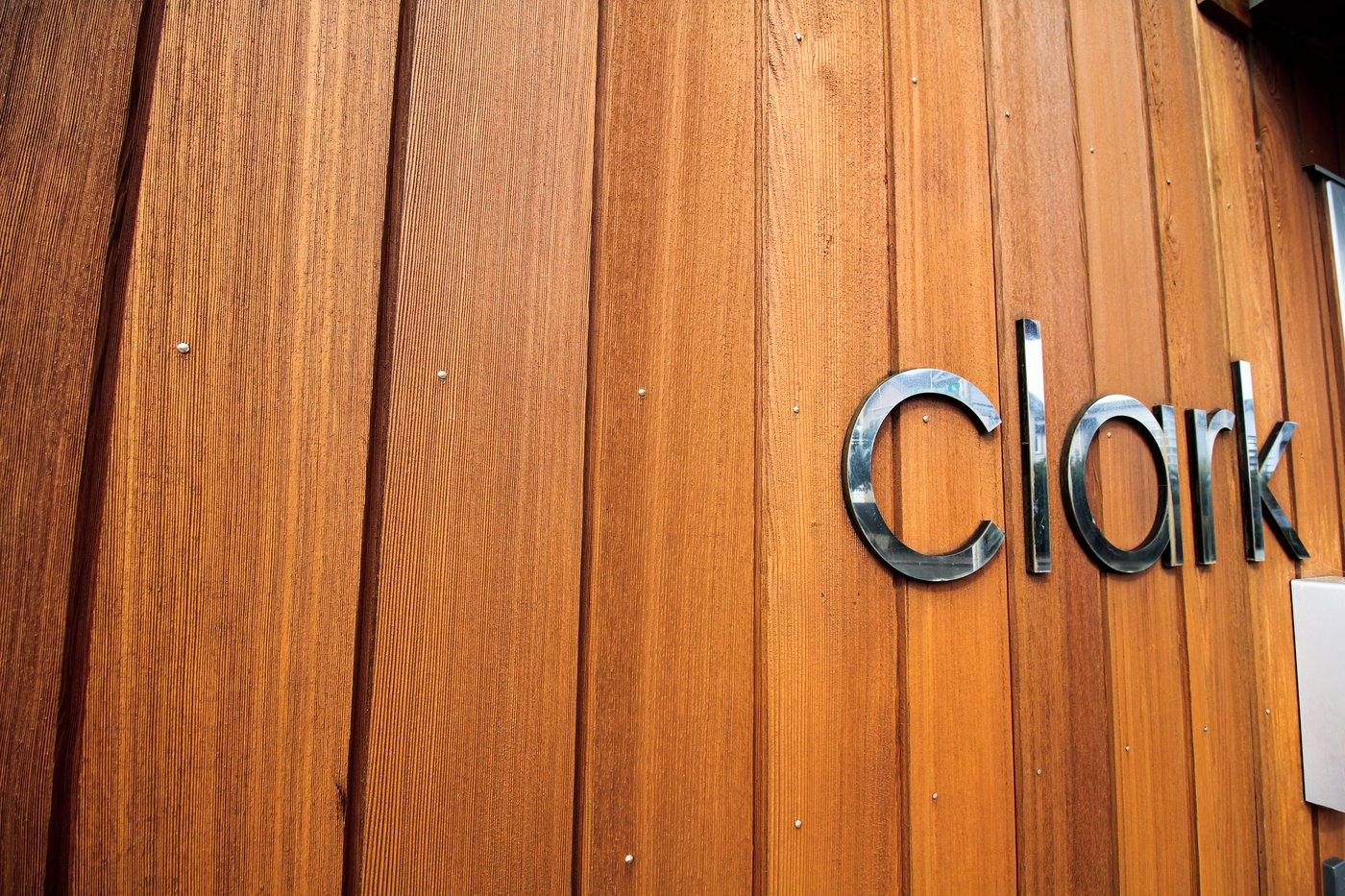Time to answer the million-dollar question: how much does it cost to maintain or restore a Cedar home?
Thankfully, the answer is nowhere close to a million dollars! Looking after Cedar is often a lot more cost-effective than people assume, and that cost just goes down with regular maintenance.
Naturally, all homes are different, and no single price will fit the huge variety of Cedar homes across the country. The prices given here are a range, based on Mark’s experience looking after Cedar homes for 30+ years.
To cover the widest range of homes, we have categorised the pricing under 3 different eras, with some variables at the end.
Late 80s to late 90s
Cedar homes from this era are stained in a distinctive shade of reddish brown. There were only two types of stains available, and they were both brown.
To change the colour of the boards will be very costly, as you would need to strip off the stain before applying a new stain or oil. Most people go for a light rinse and a recoat using one of the new waterborne stains.
The boards themselves are often still in great condition. The Cedar from this era was milled from slow growing trees, making the boards denser and more stable.
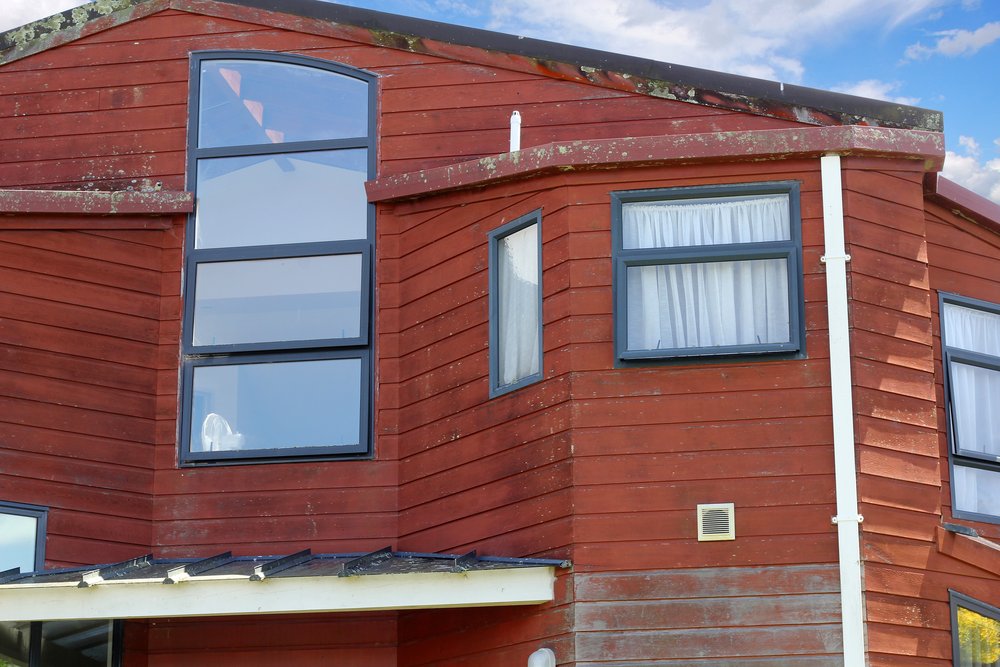
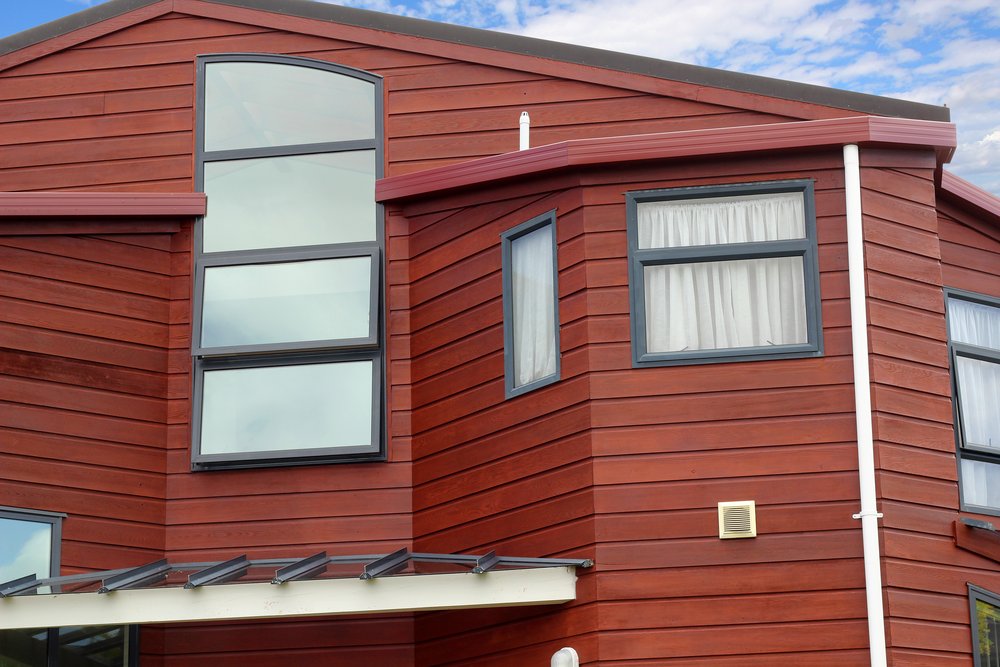
Cedar homeowners were also more likely to maintain the Cedar themselves, so the Cedar often has multiple coats of stain that further protect the boards from harmful UV rays.
Standard maintenance, or a combination of maintenance and restoration, will cost between $5.5k – $8.5k for a single-story home, and $8.5k – $10k for a double-story home.
Early 2000s to 2010
Cedar homes from the early 2000s often used Cedar as a feature, installed up high, to enhance the look of weatherboard and solid plaster houses. There are very few houses from this era that are clad entirely from Cedar.
20 years on, most of these houses have had nothing done to them. The culture of maintaining your own Cedar has diminished due to busier lifestyles and more focus on health and safety, resulting in Cedar on sun exposed faces looking shabby and tired.
This scenario usually requires restoration over maintenance. Restoration involves washing the house, removing any organic matter, stripping back any old stain, and then applying a new coat of oil.
The cost of restoration will depend on volume and aspect: how much Cedar was used as a feature and which direction it faces. If it’s northerly facing, you will need to do considerable restoration work. If you have a feature on the south face, it might still be in good condition and only require recoating every 10 years.
If the Cedar can be accessed by ladder or mobile scaffolding, the standard cost of a restoration is between $3.5 – $5.5k. Fixed scaffolding will add considerably more to the cost.
2010 – Present
Since 2010 onwards, Cedar has only grown in popularity. Homes are trending away from brick and tile, towards new townhouse developments, or architecturally designed properties.
Cedar is still a premium building material, but the price has come down in recent years due to faster growing methods and better exchange rates. As a result, we are back to building whole homes in Cedar.

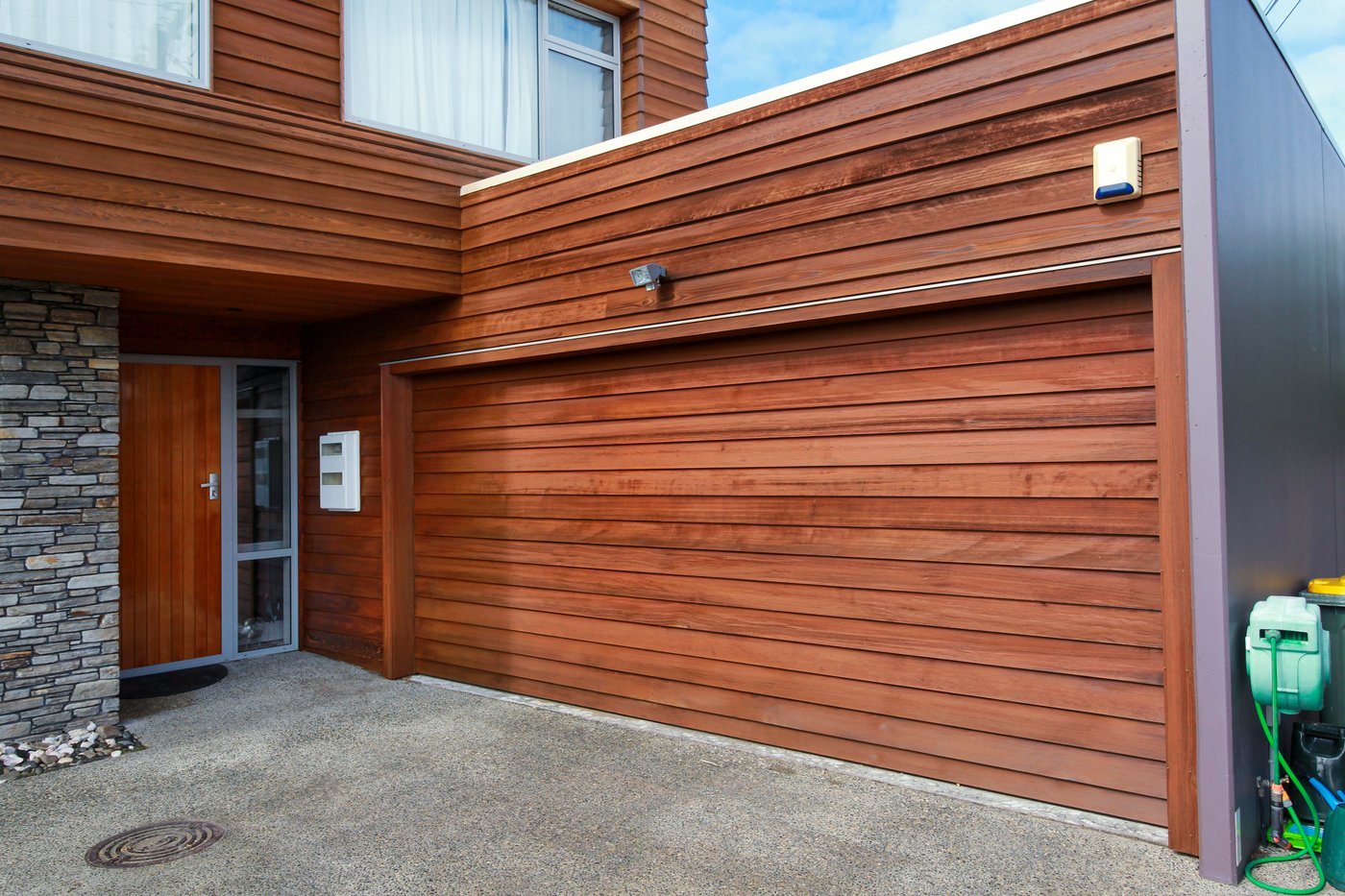
The downside is that the faster growing timber isn’t as dense as the old boards. It’s still an incredibly robust cladding but requires regular maintenance to keep stable. If neglected, the boards will start to cup, and at some point, begin to pull the fixings through the timber.
Single-story Cedar homes cost $6.5k on average for a wash and recoat. Double-story Cedar homes are upwards of $8k – $10k. Large architectural homes are $15k – $20k.
Pricing Variables
- Fixed scaffolding
Where possible we work from our own mobile scaffold towers and extension ladders, which are safe and fast, and keep costs down. Fixed scaffolding is often required when you go from 2 to 3 stories.
Scaffolding a large house will cost an additional $7.5 to $10k home. Scaffolding a smaller home, but still 2 story with high areas, will be $4k-$5k.
- Access issues
These are houses that are built on steep hillsides or have very high walls. There will always be additional costs when our team must access hard to reach areas, but it’s not often a huge expense. The areas that need rope and harness are usually limited, and it’s all part and parcel of what we do.
- Size of the house
The bigger the house, the more time, stain and oil it requires.
Additional stories on top of that will always be more expensive, and when you go from 2 to 3 stories scaffolding is required. If you have 2 stories, but there is very little up top, the extra cost will be minimal.
- Time passed
If you haven’t maintained your Cedar in the last 3-5 years, it’s going to be very dry and require a lot of product.
- Restoration vs Maintenance.
If the Cedar has never been touched, the boards will require a deep clean and oil. If they have stain, we need to strip back the broken-down stain. These are two very different treatments, with different costs associated.
Final Thoughts
No two houses are the same. There is a good reason why our team travel out to every house before we send a quote. There are a lot of variables in pricing a quote (and many of them can work in your favour!), so it’s always best to call our team for an onsite assessment.
We never push Cedar maintenance if it’s not needed and prefer to look after the best interests of our customers over the lifecycle of their homes.



